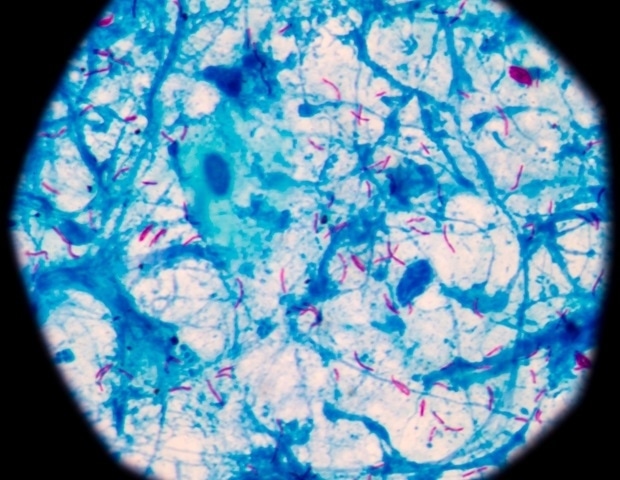Trinity College Dublin researchers, based at St James’s Hospital have provided important insights into the behavior and metabolic function of a previously largely unknown, but crucial ‘natural killer’ (NK) immune cell resident in the lungs. Their findings, published today [Thursday, 10th October 2024] in the journal: Proceedings of the National Academy of Sciences (PNAS) provide a foundation for further exploration of NK cells for the development of future treatments and therapies for a range of lung diseases, including chronic obstructive pulmonary disease (COPD), cancer and tuberculosis.
The human lung is normally a low glucose environment. During infection, however, glucose becomes readily available and its rapid uptake and metabolism enables immune cells to fight off infections. Natural killer (NK) cells are immune cells tasked with mediating early host defense. The NK cells that live long term in the lung, or in other organs, are called ’tissue resident’. Before this study, the metabolic function of human tissue-resident NK cells in the lung was largely unknown.
Researchers have shown for the first time that human tissue-resident NK cells in the lung are metabolically distinct from their counterparts that circulate in the blood. The team’s findings show that lung resident NK cells are poised to rapidly respond to increased glucose in the environment, with an enhanced capacity to increase the metabolism of glucose in order to generate materials that the NK cells need to mount an effective immune response.
Key findings
- Metabolic Distinction: Lung tissue-resident NK cells are metabolically distinct from their counterparts in the blood, showing a unique capacity to rapidly metabolize glucose in response to environmental changes, such as during infections.
- Enhanced Glycolytic Capacity: These lung-resident NK cells exhibit a higher glycolytic capacity compared to non-tissue-resident NK cells. This allows them to generate energy and necessary metabolites more efficiently, enabling a swift immune response.
- Primed for Response: The metabolic readiness of lung-resident NK cells indicates they are primed to respond quickly to increased glucose availability during infections, enhancing their ability to mount an effective immune defense.
- Implications for Disease: Understanding the distinct metabolic profile of lung-resident NK cells opens new avenues for investigating dysfunctional NK cells in respiratory diseases, suggesting that metabolism could be a target for immuno-supportive therapies in conditions like cancer and chronic infections.
Researchers noted one surprising aspect to their findings, in the readiness of the lung-resident cells to switch on their glycolytic pathways even before an infection occurs, almost as if they are primed and waiting for a “sugar rush” to activate them. This metabolic “readiness” highlights a specialized adaptation of the lung NK cells that makes them particularly effective in their local environment, which could be a key target for future therapies in lung diseases, including cancer and infections.
These findings are exciting because they establish that the NK cells in the lung are metabolically different to the NK cells found in blood. This is impactful because it will enable the investigation of dysfunctional NK cells in respiratory diseases and shows that the metabolism of lung resident NKs is a tractable target for inhalable therapies for many setting of lung disease including cancer and infection.”
Dr. Gráinne Jameson, Trinity College Dublin
Assistant Professor Sharee Basdeo in the department of clinical medicine and senior author on the paper, said: “This work has used a cutting edge technique to establish the metabolic function of these NK cells taken from clinical samples of lung washings. This allowed us to define for the first time how these cells that live in the lung use energy sources. These findings will enable future studies which will support the function of lung resident NK cells to better fight infections.“
Next steps
The next steps for this research involve delving deeper into how the unique metabolic features of lung-resident NK cells can be harnessed for therapeutic purposes. Specifically, the team plan to:
- Explore Other Metabolic Pathways: While this study focused on glucose metabolism, it is important to understand how these NK cells utilize other nutrients, such as fatty acids or amino acids, and how these metabolic pathways might change under different conditions, like chronic infection or cancer.
- Investigate Dysfunctional NK Cells: We want to explore how the metabolism of lung-resident NK cells may become impaired in different respiratory diseases, such as tuberculosis, COPD, or lung cancer. Understanding what goes wrong in these cells could lead to insights into why some patients have poorer outcomes and what can be done to improve their immune responses.
Source:
Journal reference:
Jameson, G., et al. (2024) Human tissue-resident NK cells in the lung have a higher glycolytic capacity than non-tissue-resident NK cells in the lung and blood. Proceedings of the National Academy of Sciences. doi.org/10.1073/pnas.2412489121.
Source link : News-Medica

